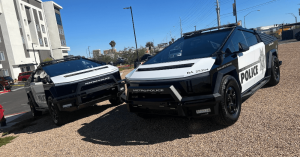Picking the right wheels for your next road trip can make or break your entire adventure. You’ve probably heard horror stories from friends who got stranded on a desert highway or watched their car overheat while climbing through mountain passes. The truth is, the best road trip vehicle isn’t always the biggest or fanciest one on the lot. It’s the one that fits your needs, won’t leave you stranded, and actually makes the drive enjoyable.
- Fuel economy matters more than you think when you’re covering hundreds of miles between fill-ups, especially in areas where gas stations are few and far between.
- Storage space needs to work for your specific trip style, whether you’re hauling camping gear, luggage for six people, or just want room to bring back souvenirs.
- Regular maintenance and pre-trip checks prevent the majority of roadside breakdowns, so knowing what to inspect before you leave saves time and stress later.
Size and Drivability
Here’s what most people get wrong about choosing a road trip vehicle. They think bigger is always better. Drive through any national park campground and you’ll see massive RVs that can barely fit down winding mountain roads.
The sweet spot combines enough space for your gear without turning every parking lot into a challenge. Midsize SUVs like the Toyota RAV4 or Honda CR-V give you room to stretch while still fitting into regular parking spaces. You can pull into a grocery store or roadside diner without circling for 20 minutes looking for truck parking.
Want something between a van and a full-sized RV? B class motorhomes hit that middle ground perfectly. These compact motorhomes typically measure 17 to 24 feet long and include sleeping quarters, a small kitchen, and bathroom facilities. They drive like a regular van but give you the freedom to camp anywhere without booking hotels. You get 18 to 25 miles per gallon, which beats larger RVs by a long shot.
Storage That Actually Works
Before you commit to any vehicle, think about what you actually need to bring. A weekend beach trip requires different space than a two-week cross-country haul with kids and pets.
Minivans still dominate this category for good reason. The Chrysler Pacifica has fold-flat seats that create a massive cargo area when you need it. Three-row SUVs like the Chevrolet Suburban or Ford Expedition give you similar flexibility. These vehicles let you configure the space based on how many people you’re bringing and how much stuff tags along.
Don’t forget about the small stuff that adds up. Cup holders, door pockets, center console storage, and roof racks all contribute to keeping everyone comfortable during long drives. Nobody wants to dig through a pile of bags in the back seat looking for snacks or phone chargers.
The Real Cost of Getting There
Gas prices fluctuate, but they’re always a factor on long trips. A vehicle getting 15 miles per gallon versus one getting 30 mpg can mean hundreds of dollars difference on a cross-country drive.
Plug-in hybrids make sense if your trip includes city driving. The Pacifica Plug-In Hybrid can handle shorter trips on electric power alone before switching to gas for highway miles. This setup works great when you’re exploring a destination city after driving there.
Diesel engines in trucks like older RAM 1500 models with the EcoDiesel V-6 get better highway fuel economy than their gas counterparts. This matters when you’re covering serious distance.
Don’t Skip the Pre-Trip Inspection
Even the most reliable vehicle needs attention before a big trip. Oil changes, tire checks, and fluid top-offs prevent most roadside problems.
Check your tire pressure when the tires are cold, and look at the tread depth using the penny test. Stick a penny into the tread with Lincoln’s head upside down. If you can see the top of his head, you need new tires before hitting the road.
Battery problems rank among the top reasons people call for roadside assistance. If your battery is more than three years old, have it tested before leaving. Many auto parts stores do this for free.
Brake fluid, coolant, power steering fluid, and windshield washer fluid all need checking. Top them off if they’re low. These simple checks take 15 minutes but prevent hours of frustration later.
Making Your Choice
The best road trip vehicle matches your specific situation. Couples might love the compact size and fuel economy of a sedan or small SUV. Families need three rows and lots of cargo space. Adventure seekers heading off pavement want all-wheel drive and good ground clearance.
Test drive vehicles with your actual road trip in mind. Can everyone fit comfortably for several hours? Does the cargo area hold your typical load? Can you reach all the controls easily while driving? These practical questions matter more than fancy features you’ll rarely use.
Visit your mechanic for a complete inspection a week before leaving. This gives you time to address any problems they find. Bring copies of your insurance, registration, and warranty information. Pack an emergency kit with jumper cables, a flashlight, basic tools, and extra fluids.
Ready to Roll
Choosing the right vehicle and maintaining it properly turns potential disasters into minor inconveniences. You’ll spend less time worrying about breakdowns and more time enjoying the scenery. That’s what road trips should be about.






More Stories
People Dressed as Elvis and Shrek Just Raced Giant Hollowed-Out Pumpkins in Oregon
Tech Features That Actually Make Driving Easier
Watch an Ad Before You Wipe? China’s QR Code Toilet Paper Sparks Bathroom Tech Backlash